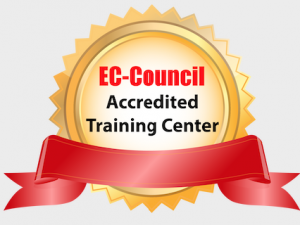Course Overview:
This course begins by introducing you to fundamental cloud computing and AWS security concepts including AWS access control and management, governance, logging, and encryption methods. It also covers security-related compliance protocols and risk management strategies, as well as procedures related to auditing your AWS security infrastructure.
The course continues to teach students how to efficiently use AWS security services to stay secure and compliant in the AWS cloud. The course focuses on the AWS-recommended security best practices that you can implement to enhance the security of your data and systems in the cloud. The course highlights the security features of AWS key services including compute, storage, networking, and database services. This course also refers to the common security control objectives and regulatory compliance standards and examines use cases for running regulated workloads on AWS across different verticals, globally. You will also learn how to leverage AWS services and tools for automation and continuous monitoring—taking your security operations to the next level.
Attendees to CL-425: AWS Security Operations and Architecture will receive TechNow approved course materials and expert instruction.
Duration: 5 Days
Audience:
• Security engineers
• Security architects
• Security analysts
• Security auditors
• Individuals who are responsible for governing, auditing, and testing an organization’s IT infrastructure, and ensuring conformity of the infrastructure to security, risk, and compliance guidelines
DoD 8140: Not Mandated
Course Prerequisites:
We recommend that attendees of this course have the following prerequisites:
This course assumes you have the equivalent experience or have taken the AWS operational courses that are in the TechNow AWS track.
• CL-415: AWS Security Operations
The above courses encapsulate prerequisite knowledge:
• Experience with governance, risk, and compliance regulations and control objectives
• Working knowledge of IT security practices
• Working knowledge of IT infrastructure concepts
• Familiarity with cloud computing concepts
Course Objectives:
This course teaches you how to:
• Identify the security and compliance benefits of using the AWS cloud.
• Discuss the AWS Shared Responsibility Model.
• Describe the access control and access management features of AWS.
• Use AWS services for security logging and monitoring.
• Describe data encryption methods to secure sensitive data.
• Describe AWS services used to protect network security.
• Describe the basic steps to ensure strong governance of your AWS resources.
• Identify AWS services used to maintain governance of control environments.
• Use the AWS audit features.
• Explain how to audit an AWS environment.
• Explain the AWS compliance and assurance programs.
• Describe how AWS audits and attestations validate that security controls are implemented and operating effectively.
• Assimilate and leverage the AWS shared security responsibility model.
• Mange user identity and access management in the AWS cloud.
• Use AWS security services such as AWS Identity and Access Management, Amazon Virtual Private Cloud, AWS Config, AWS CloudTrail, AWS Key Management Service, AWS CloudHSM, and AWS Trusted Advisor.
• Implement better security controls for your resources in the AWS cloud.
• Manage and audit your AWS resources from a security perspective.
• Monitor and log access and usage of AWS compute, storage, networking, and database services.
• Analyze events by capturing, monitoring, processing, and analyzing logs.
• Identify AWS services and tools to help automate, monitor, and manage security operations on AWS.
• Perform security incident management in the AWS cloud.
• Perform security assessments to ensure that common vulnerabilities are patched and security best practices are applied. The assessment outline deals both with AWS specifics and also lays down the workflow of NIST, FedRAMP, and Cloud Security Alliance STAR compliance for a deployed AWS solution.
Dates/Locations: No Events
Course Outline:
Day 1
• Introduction to Cloud Computing and AWS Security
• Access Control and Management
• AWS Security: Governance, Logging, and Encryption
• Compliance and Risk Management
Day 2
• Introduction to Cloud Security Course Objectives
• Security of the AWS Cloud: Entry Points, Web Application, Communications, and Incident Response.
• Cloud Aware Governance and Compliance and related control frameworks.
• Identity and Access Management
Day 3
• Securing AWS Infrastructure Services
• Securing AWS Container Services
• Securing AWS Abstracted Services
• Using AWS Security Services
Day 4
• Data Protection in the AWS Cloud
• Managing security in a hybrid environment
• Deep dive into AWS monitoring and log analysis
• Protecting against outside threats to AWS VPC
Day 5
• How to carry out a Pentest on an AWS solution
• Security Incident Management and Automating security and incident response
• Threat detection and monitoring sensitive data
• Lets Do it! Building Compliant Workloads on AWS—Case Study
